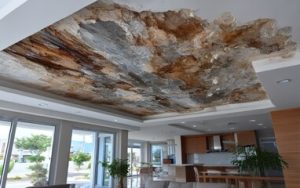Solar power delivers triple bottom line benefits: lower energy costs, a greener business footprint, and greater independence from volatile energy markets. It also enhances brand reputation and helps businesses attract and retain employees.

However, there are many challenges to growing a solar manufacturing business. These include access to financing, and difficulties with navigating the regulatory environment. Contact Solar Companies Helena MT for professional help.
The manufacturing process for solar panels is complex, requiring precision and strict quality control. It also requires large capital investments. This can be difficult for small-scale manufacturers, who may not have access to adequate financing. However, a digital marketing strategy can help these companies overcome these challenges and achieve sustainable growth.
One of the biggest challenges of scaling a solar company is maintaining a balanced production and distribution pipeline. This is essential for the success of any renewable energy project, but can be challenging if demand for solar panels fluctuates. The best way to balance the production and distribution pipeline is to forecast demand accurately. This will ensure that you are able to produce enough solar panels to meet demand and prevent overproduction.
Another challenge that many solar companies face is securing reliable suppliers of raw materials. The solar panel industry is highly dependent on the availability of a wide range of raw materials, including silicon ingots and wafers. This can be a challenge for solar companies, which are often forced to use foreign suppliers due to the lack of domestic supply. However, it is important to find reliable suppliers and build partnerships with them to ensure a stable production process.
In addition to ensuring consistent quality, it is important to consider the impact of solar on local communities and environmental conditions. For example, it is important to consider the impacts on local water sources and wildlife habitats. Additionally, it is crucial to assess whether a solar project will affect local air quality. The impact of a solar project can also be mitigated by engaging local residents and businesses in the planning process.
A growing global demand for clean, affordable energy is driving the solar industry to scale up. However, the market is facing a number of challenges, including rising costs and political uncertainty. To address these challenges, the solar industry is taking steps to improve efficiency and reduce cost.
To drive this innovation, the industry needs new technologies to increase efficiency and reach economies of scale. Additionally, solar projects need to improve grid reliability and resilience. This will require the development of advanced power electronics and generation controls, which are critical for system reliability. In addition, solar will need to work with other technologies, such as energy storage, to ensure that the electric grid remains functional during a blackout.
Finding reliable suppliers of raw materials
Solar power provides many benefits to businesses and homeowners. One of the most obvious benefits is reduced electricity costs. This is especially true for businesses that rely on air conditioning and other energy-intensive equipment. By switching to solar, these businesses can save thousands of dollars a year on their electricity bill. The savings are a great way to offset the upfront cost of installing solar panels.
Solar energy also helps the environment by reducing emissions and improving the overall quality of life in a community. In addition to its environmental benefits, it can boost local economies. For example, a solar business can hire skilled workers in construction and engineering, which can help the economy grow. It can also increase property values by attracting environmentally conscious buyers.
Investing in solar energy is an excellent choice for any business. It reduces a significant portion of your energy expenses and provides a stable, predictable price for years to come. In addition, it is a clean and reliable source of energy that won’t run out or contribute to climate change. In fact, if you’re using a grid-tied system, it can even benefit the environment by allowing you to sell excess electricity back to the utility company.
One of the best ways to protect your investment is to use certified installers. This will ensure that the installation adheres to all local codes and regulations. It will also decrease the risk of damage from severe weather conditions and other hazards. Furthermore, you should also consider taking measures to protect your solar systems from theft and vandalism. This can be done by removing overhanging trees and implementing protective guards. You should also consider fire prevention measures, including arc fault detection devices and fire suppression systems.
Finally, a solar energy system can improve a community’s health by reducing pollution from fossil fuels. This is especially beneficial for children and the elderly, as it can decrease respiratory illnesses and other health problems. It can also help the environment by lowering carbon dioxide levels and other harmful pollutants.
While the upfront cost of solar technology can be high, it pays off within five to ten years. Once you’ve reached that point, your energy bills will be virtually free. This is particularly important as extreme weather events become more common, as it will allow you to be less dependent on the vulnerable electrical grid.
Developing an efficient distribution network
The distribution network of solar energy is an important part of the system. This network can help to stabilize power grids and reduce the risk of outages. In addition, it can improve overall energy efficiency and provide consumers with a more stable pricing structure. This can lead to higher customer satisfaction and help the solar industry grow. However, developing an efficient distribution network requires significant investments and technical expertise. Moreover, solar companies must also understand how to communicate with customers in an effective way.
The solar supply chain is characterized by dynamic complexity and non-linear behavior, influenced by numerous interacting factors. It also exhibits emergent properties, such as the ability to learn and adapt to new challenges and opportunities. This understanding is crucial to enabling sustainable and resilient energy systems.
In order to meet demand, solar manufacturers must invest in massive production capacity. This process can be costly and time consuming. In addition, it can be difficult to predict future demand and ensure that production capacity is sufficient. In addition, different countries and regions have their own regulations and policies that can affect the ability of a manufacturer to produce solar panels.
Manufacturing solar cells and modules is a technologically sophisticated process. Continuous technological advancements are aimed at improving cell efficiency, reducing manufacturing costs, and ensuring long-term performance reliability. Rigorous quality control measures are necessary to ensure consistent product quality and scalability. In addition, diversification of cell technology is important to reduce reliance on a single technology and explore solutions optimized for specific applications.
Another challenge faced by solar manufacturers is access to financing. The solar industry is highly competitive and small-scale manufacturers face barriers to securing financing. Furthermore, large-scale manufacturers have more resources and can produce solar panels at a lower cost than small-scale manufacturers. This can make it challenging for smaller manufacturers to compete and remain profitable. Additionally, there is concern that large-scale manufacturers could manipulate the price of solar panels and drive small-scale producers out of the market.
Developing a business plan
The solar energy industry is booming and offers lucrative opportunities for entrepreneurs who want to invest in it. However, it is important to have a sound business plan before starting this venture. This will help you determine the feasibility of your project and make decisions about financing, equipment, and personnel. It will also allow you to market your product in a targeted way and attract potential investors. You can also seek professional advice from a consultant or accountant to help you develop a business plan.
The first step in developing a solar production business plan is determining how much you can afford to invest. You can use your own funds, take out loans, or find investors for your project. Using your own funds will give you more control, but limits your scale. Taking out loans will give you more capital, but will require regular payments. Bringing in investors will increase your scale and may require a share of ownership.
Developing a solar business plan involves creating a clear outline of the goals and objectives of your company, as well as how you will achieve them. This plan will provide the framework you need to develop your solar panel manufacturing plant and market your products to prospective customers. It should include an executive summary, a description of your business model, and a financial analysis. It should also describe the technologies used in your business, the costs associated with setting up a solar manufacturing facility, and the regulatory requirements that you must follow.
Having a strong sales team is crucial to a solar business. You must be able to close deals by convincing prospects that your system will save them money and add value to their home. The most reliable way to do this is to be honest with your prospects and explain the risks of solar power. This will not always win you the sale, but it will give your leads peace of mind and ensure that they are making a wise investment decision. It will also prevent them from being disappointed if their expectations aren’t met.




